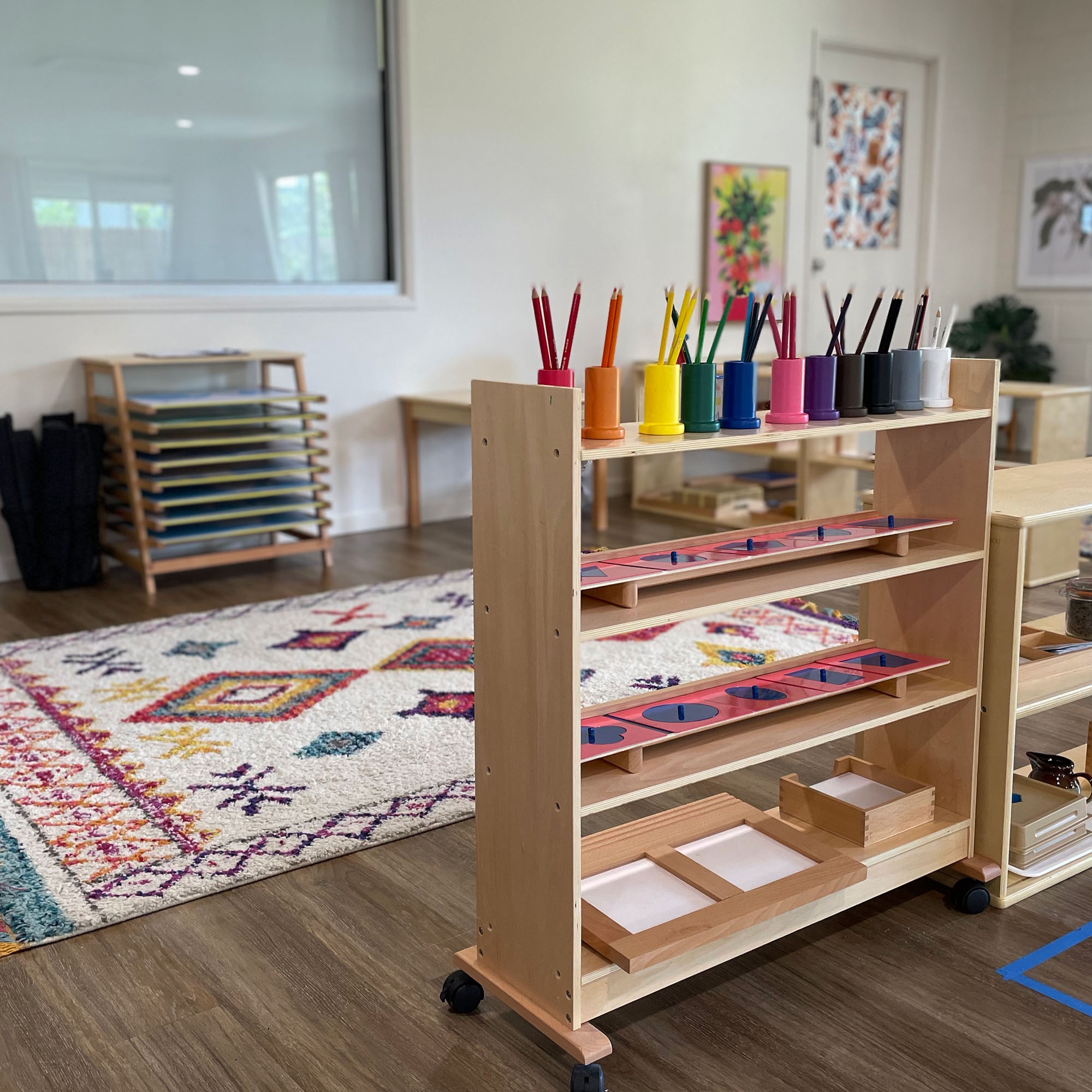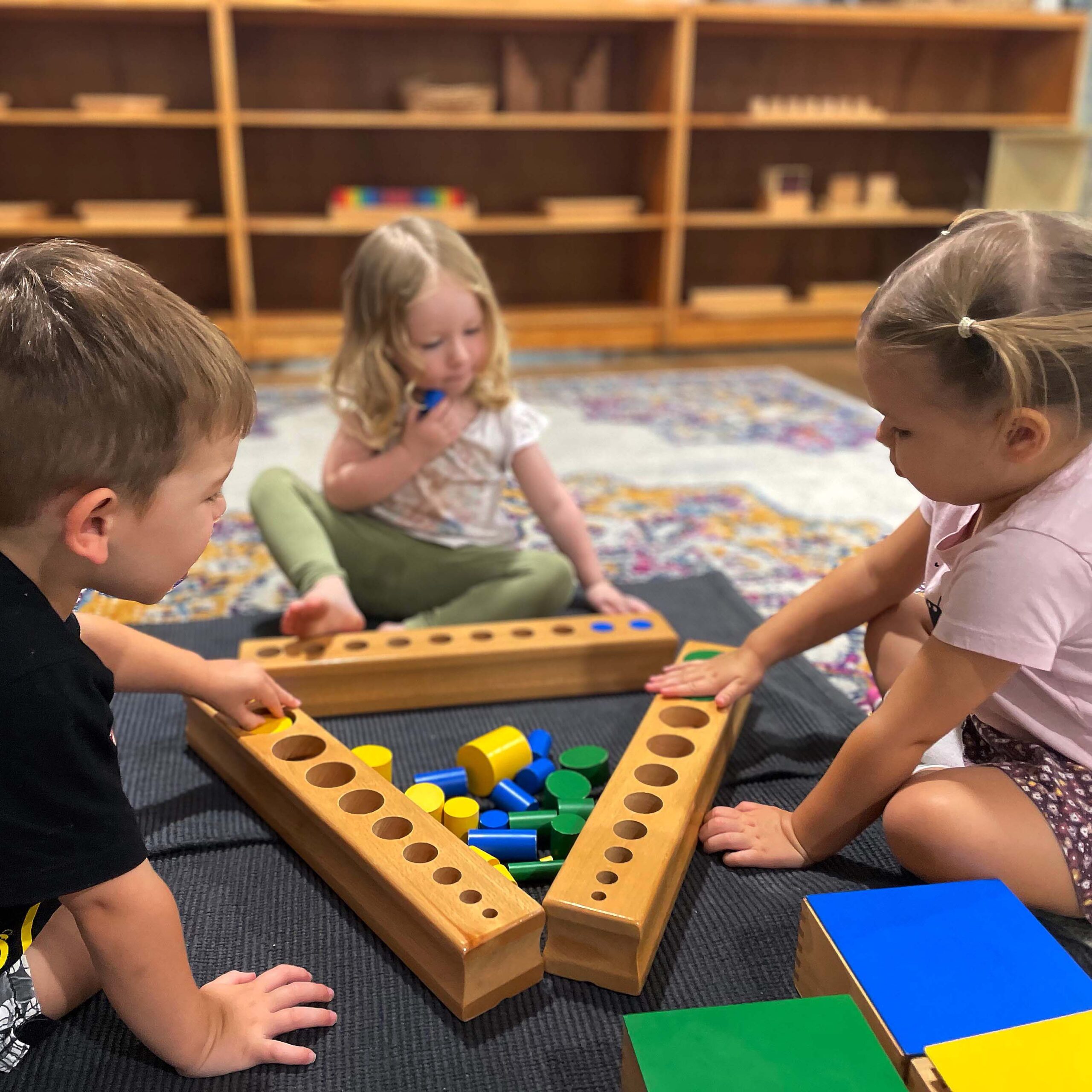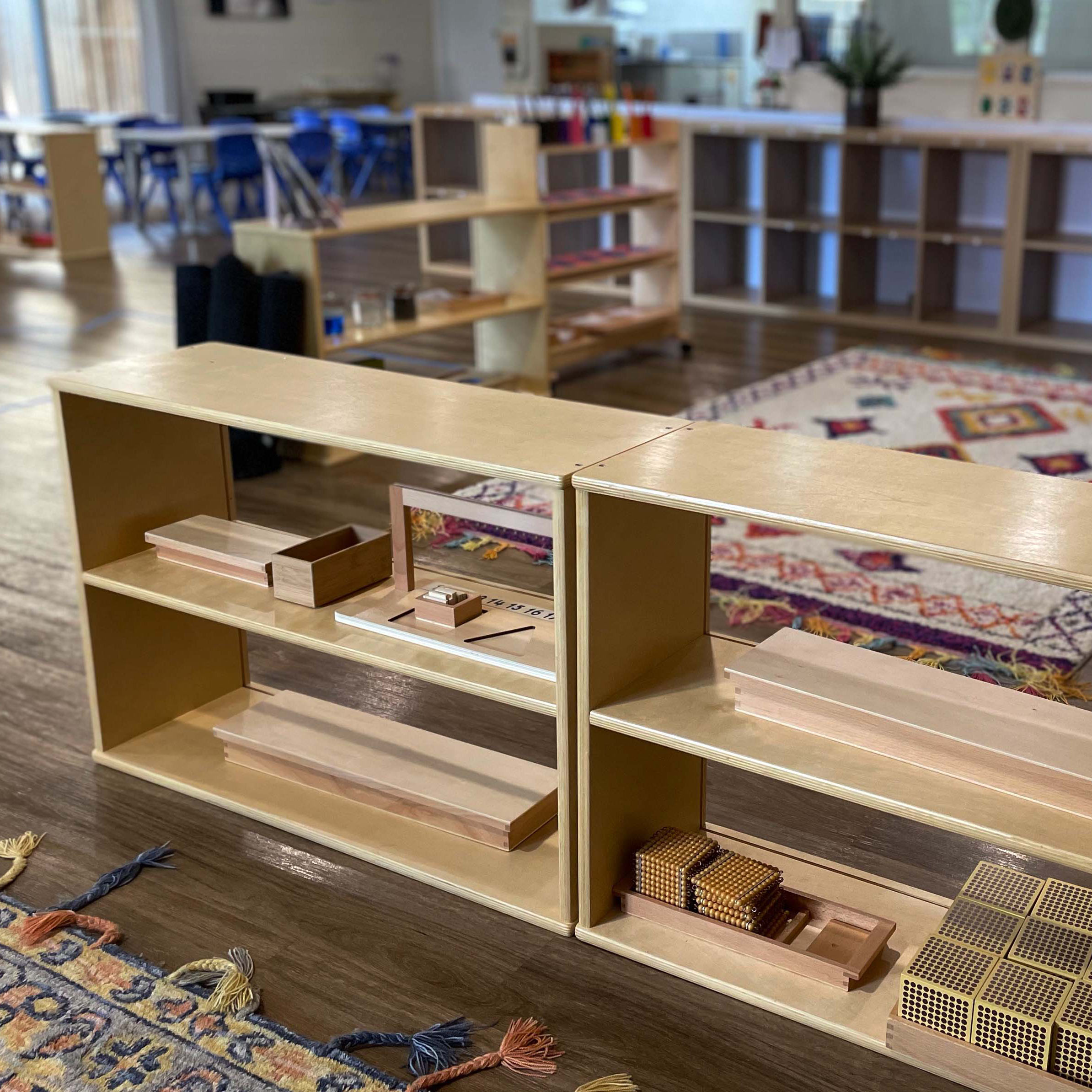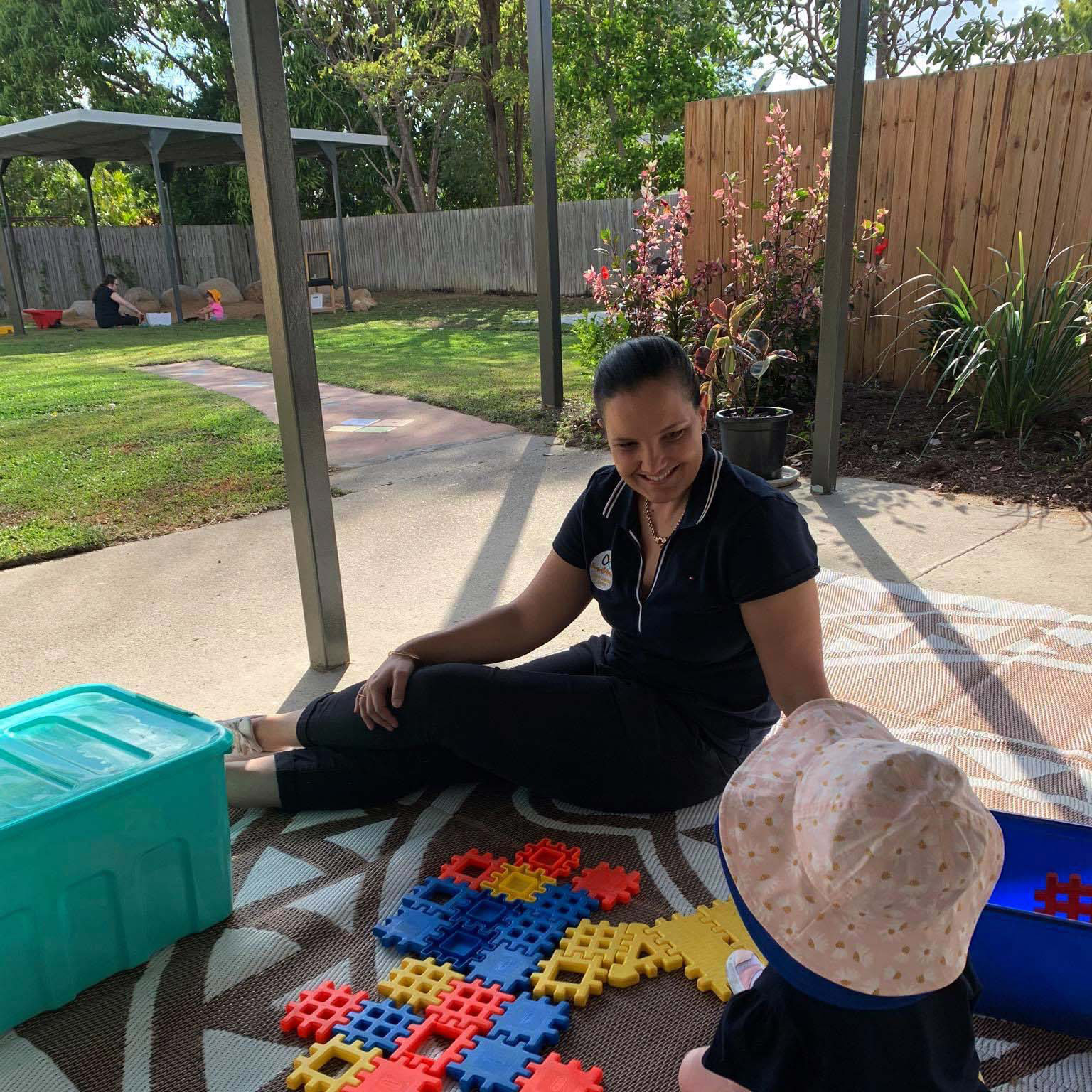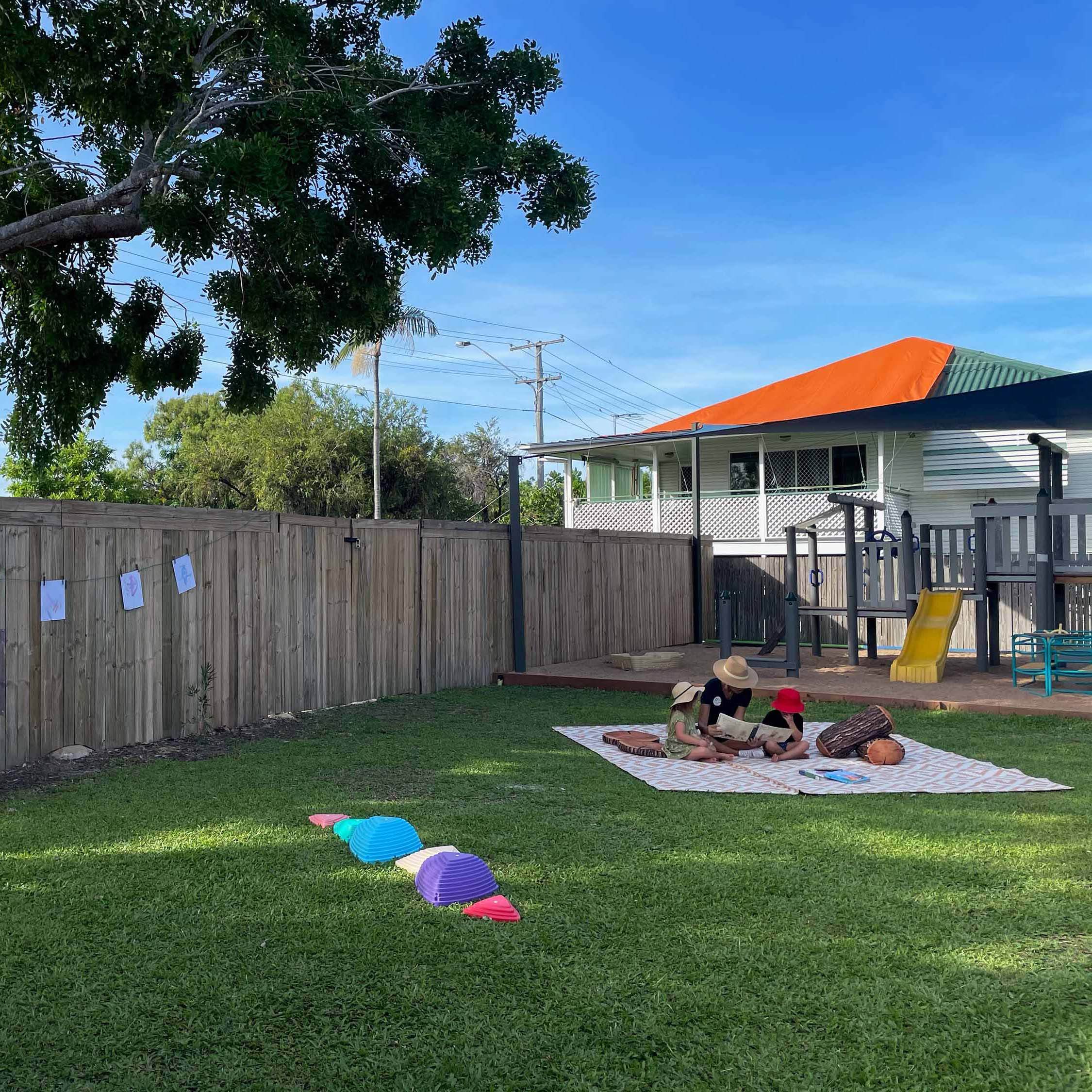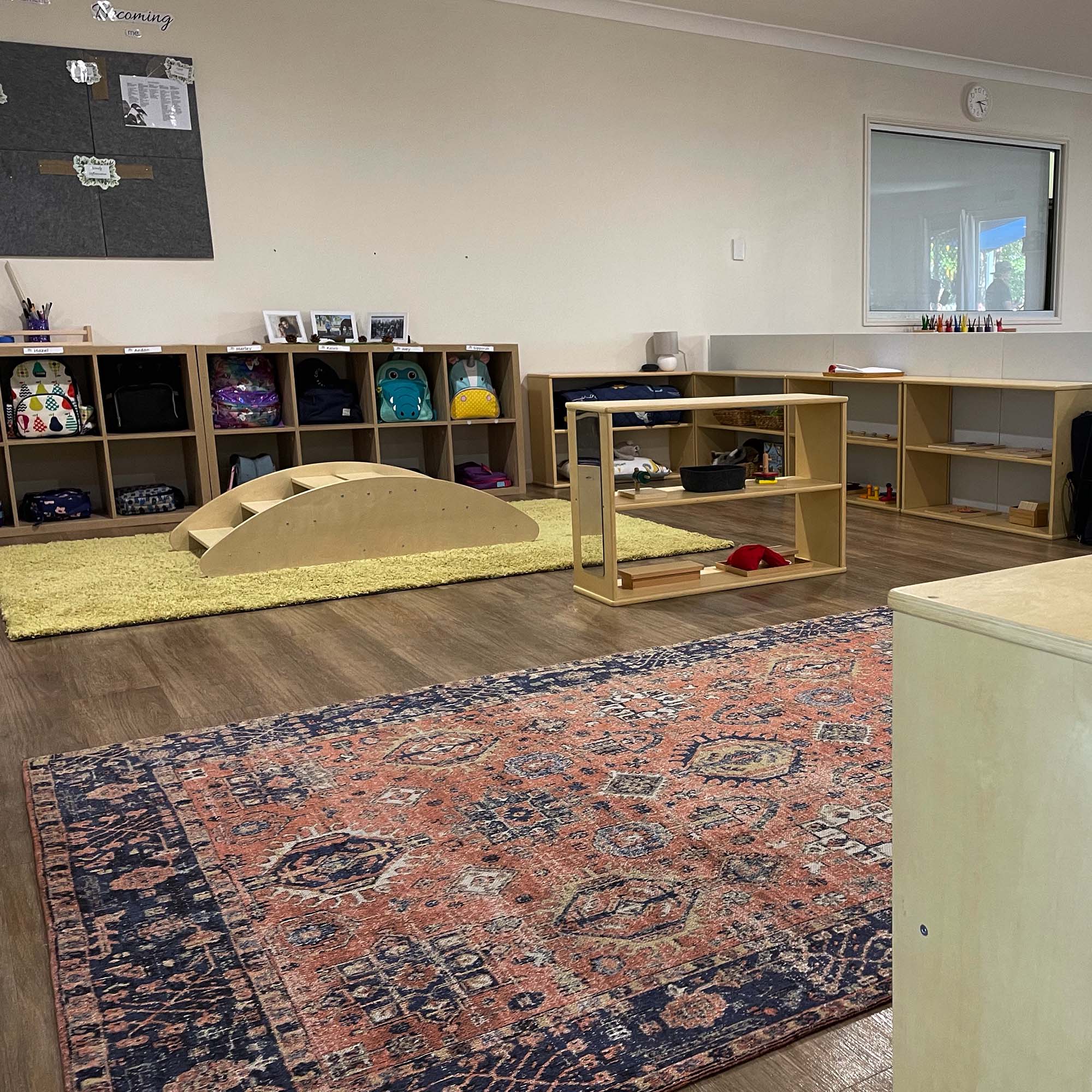our classrooms &
learning environment
Our environment has been carefully crafted with the use of Montessori materials to set the children up for success in their everyday learning.
The prepared environmentis a key part of Maria Montessori’s Philosophy. The idea behind the “prepared environment” is that a childs’ environment can be designed to facilitate the maximum amount of independent learning and exploration for the child.
Key components of the Prepared Environment
Order
“There is a place for everything and everything in its place.” This is one of the key phrases in a Montessori environment, we put this phrase into practice within our environment though meeting the child’s need for order. This is achieved by making sure materials are stored in the same place every day. We make sure each work is complete and repairs of material are made promptly. Lessons are presented in the same sequence and each activity ends with the child returning the work to the shelf. This physical sense of order allows the children to internalise the order of their surroundings and begin to understand the world around them.
Freedom
One of the key components of a Montessori prepared environment is freedom of choice. This is achieved through providing opportunities for freedom to explore, freedom of move, freedom to interact socially, and freedom of interference from others
the five key areas of a Montessori classroom
Practical Life
The practical life area includes a wide variety of materials and resources that aid the development of life skills such as independence, concentration, self-awareness and confidence. The following is a brief overview of this area.
- Care of Self- This my include food preparation or washing of dishes or clothing.
- Grace and Courtesy- greetings and manners
- Control of Movement- refining movements, moving quietly and calmly
- Care of Environment- cleaning and gardening
Sensorial
The sensorial resources provide opportunities for the refinement of each of the senses:
-
Sight (visual),
-
Touch (tactile),
-
Smell (olfactory),
-
Taste (gustatory)
-
Sound (auditory)
-
Stereognostic (muscle memory)
Maths
The sensorial area is the preparation for mathematics providing opportunities for the development of pre concepts. The mathematics area is developed with the use of concrete learning materials. Hands-on materials are used such as number rods, sandpaper numbers, number boards and beads. Each material leads into one another allowing the child to gradually moves to from concrete to abstract areas such as place value, addition, subtraction and multiplication.
Language
The development of language is based on phonetic awareness in a Montessori classroom. The children work with hands-on language materials such as the sandpaper letters and the moveable alphabet. Language is not only developed in this area, it is developed throughout the curriculum. The spoken language is the foundation for writing and then reading.
Culture
The cultural area allows the child to explore the natural world around them and includes:
-
Geography- continents, landforms, earth layers, solar system
-
Zoology- classification, physiology of animals
-
Botany- ecology, classification, physiology of plants
-
Science
